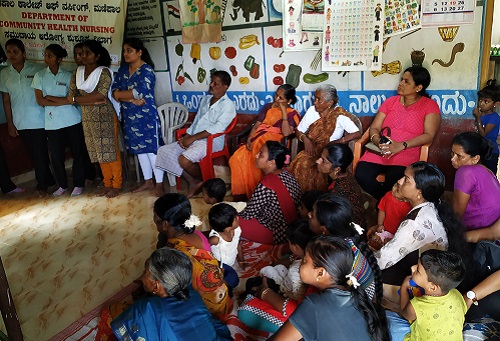Context:
World Iodine Deficiency Day, also known as Global Iodine Deficiency Disorders Prevention Day, is observed annually on 21st October.
World Iodine Deficiency Day
- It aims to raise awareness about the essential role of iodine in maintaining good health and to emphasize the consequences of iodine deficiency.
- In 2002, various organisations came up with various awareness programs and with more time, more countries started joining the cause, and it became World Iodine Deficiency Day.
Iodine
- Iodine is an essential component of the thyroid hormones, thyroxine (T4) and triiodothyronine (T3), which regulate metabolism and are crucial for fetal and infant development.
- Found in iodized salt and various foods (e.g., seafood, dairy).
- Exists as iodide (most common), iodate, and elemental iodine (I2).
- Iodide is quickly absorbed in the stomach; excess is excreted in urine
Iodine deficiency
Iodine intake falls below approximately 10–20 mcg/day leads to hypothyroidism (a condition that is frequently accompanied by goitre).
- A goiter (GOI-tur) is the irregular growth of the thyroid gland. The thyroid is a butterfly-shaped gland located at the base of the neck just below the Adam’s apple.
Iodine intake falls below approximately 10–20 mcg/day in pregnant women can cause neurodevelopmental deficits and growth retardation in the fetus as well as miscarriage (sudden loss of a pregnancy before the 20th week) and stillbirth.
Chronic, severe iodine deficiency in utero causes cretinism.

- Cretinism is a condition of severe physical and mental retardation due to iodine deficiency, and specifically due to deficiency of thyroid hormones during early pregnancy.
In adults, mild to moderate iodine deficiency can cause goiter as well as impaired mental function and work productivity secondary to hypothyroidism.
National Efforts to Eradicate Iodine Deficiency
National Goitre Control Programme (NGCP), 1962: To address iodine deficiency, linked to mental and physical retardation, cretinism, and stillbirths.
National Iodine Deficiency Disorders Control Programme (NIDDCP): Later in 1992, the program was broadened and renamed the NIDDCP to cover a wider range of iodine deficiency disorders (IDD) and ensure its implementation across all States and Union Territories.
- To bring the prevalence of IDD to below 5% in the country
- To ensure 100% consumption of adequately iodated salt (15ppm) at the household level.
Iodize all edible salt:
- In 1984, a major policy decision was made to iodize all edible salt in India, launching a phased initiative in 1986.
- By 1992, the country aimed to fully transition to iodized salt.
- Currently, India produces 65 lakh metric tonnes of iodized salt annually, sufficient to meet population needs.
Achievements of the National Iodine Deficiency Disorders Control Programme (NIDDCP)
- Reduction in Total Goiter Rate (TGR): The program has significantly decreased the Total Goiter Rate, a key indicator of iodine deficiency, across the country.
- Increased Iodized Salt Production and Consumption: Annual production of iodized salt has reached 6.5 million metric tonnes (MT), sufficient to meet the dietary needs of the Indian population.
- Regulatory Measures:the Food Safety and Standards (Prohibition and Restriction on Sales) Regulation, 2011, Under Regulation 2.3.12 of the Food Safety and Standards (Prohibition and Restriction on Sales) Regulation, 2011, the sale of common salt for direct human consumption is prohibited unless the salt is iodized.
- Establishment of Monitoring Laboratories: A National Reference Laboratory for monitoring iodine deficiency disorders has been established at the National Centre for Disease Control (NCDC), Delhi.
- State-Level Implementation: 35 States/UTs have set up Iodine Deficiency Disorders (IDD) Control Cells within their respective State Health Directorates, and corresponding State IDD Monitoring Laboratories to ensure effective implementation of the programme.

